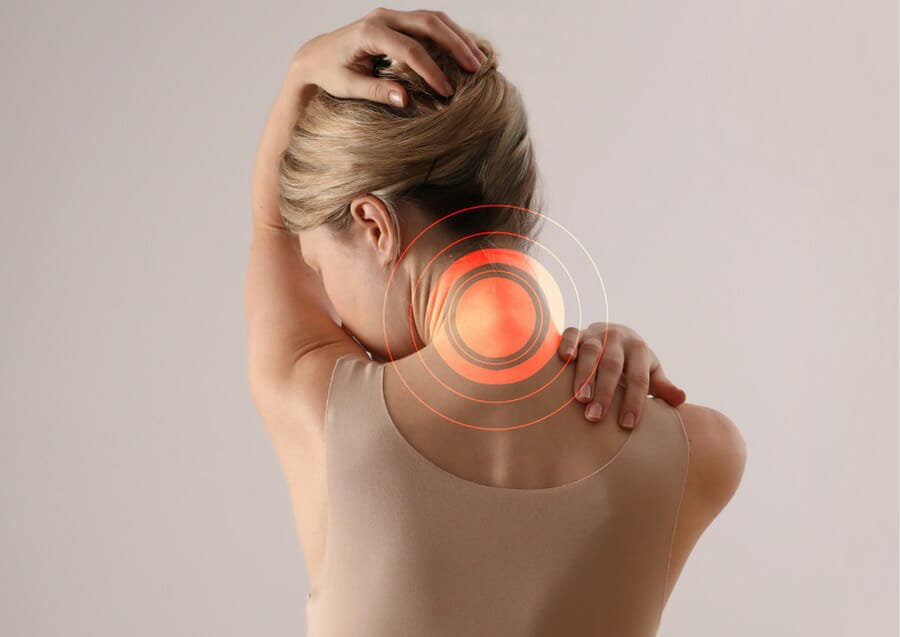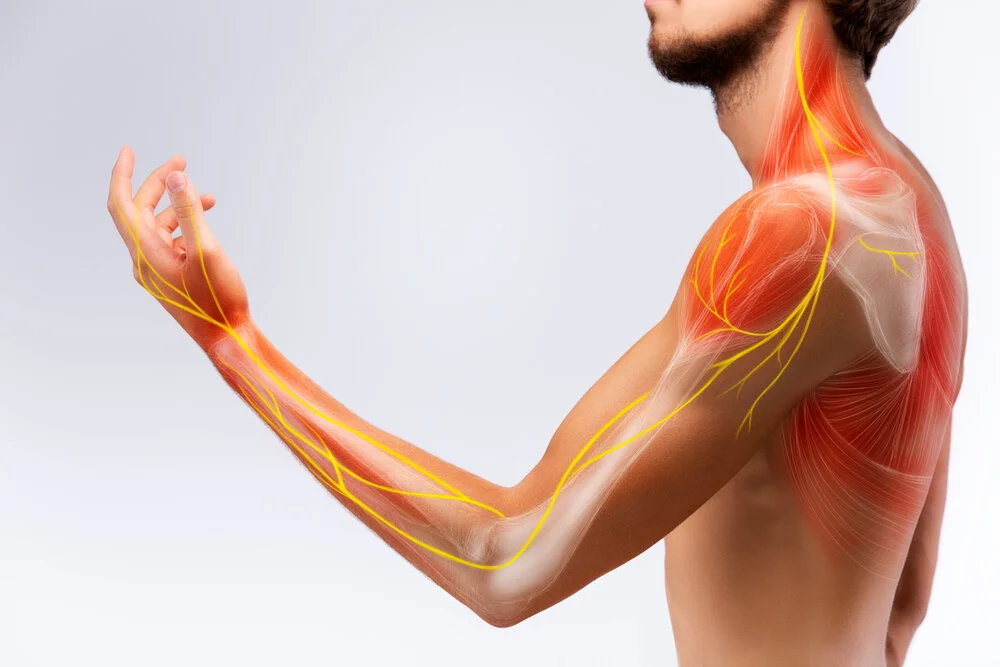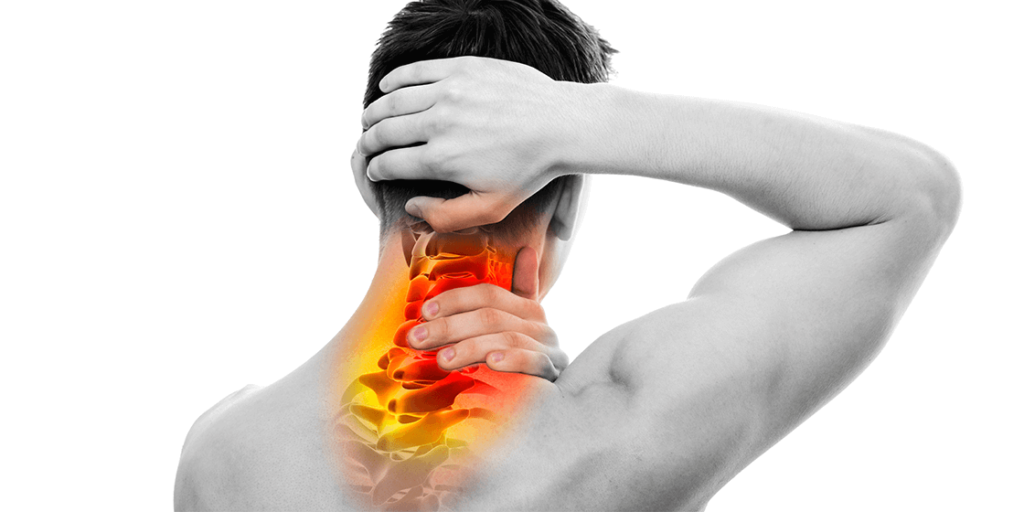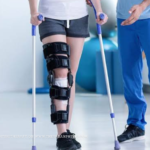Your neck isn’t just stiff—it’s screaming for help.
That ache at the base of your skull. The tension between your shoulder blades. The way you can’t look over your shoulder without turning your whole body. You’ve been living with it for months, maybe years, telling yourself it’s just from sitting at a desk or looking at your phone.
“Everyone deals with this,” you think. “It’s just modern life.”
But here’s what you don’t realize: the longer you ignore it, the more it creeps into every part of your life—even sleep and focus. That stiff neck isn’t staying in your neck. It’s triggering migraines. It’s compressing nerves. It’s disrupting your breathing. It’s stealing your sleep and concentration.
And it’s only getting worse.
The “Tech Neck” Epidemic Nobody’s Taking Seriously
We’re living through the first generation to spend 8-12 hours daily with our heads tilted forward, staring at screens. The human neck was never designed for this.
The Numbers Are Staggering
The average human head weighs about 10-12 pounds. When your neck is in neutral alignment, those 10 pounds are distributed efficiently through your spine.
But for every inch your head moves forward, the strain on your neck increases dramatically:
- 15 degrees forward: 27 pounds of pressure
- 30 degrees forward: 40 pounds of pressure
- 45 degrees forward: 49 pounds of pressure
- 60 degrees forward: 60 pounds of pressure
Most people using phones tilt their heads 60 degrees. That’s like carrying an 8-year-old child on your neck for hours every single day.
No wonder you’re in pain.
It’s Not Just Stiffness—It’s a Chain Reaction
Here’s what most people don’t understand: neck problems never stay isolated. Your neck is the bridge between your head and body, packed with nerves, blood vessels, and muscles that affect everything from your brain function to your breathing.
When your neck is chronically misaligned, a cascade of problems begins.
What’s Really Happening to Your Body
Forward Head Posture Changes Everything
As your head shifts forward, your body compensates. Your shoulders round. Your upper back curves. Your chest collapses. This isn’t just aesthetic—it’s mechanical dysfunction that affects multiple body systems.
Muscles Work Overtime
The muscles at the back of your neck and between your shoulder blades have to constantly contract to prevent your head from falling forward. They’re working all day, every day, without rest. Eventually, they become chronically tight, painful, and develop trigger points.
Nerves Get Compressed
Your neck contains crucial nerves that travel from your brain to your arms, hands, and other parts of your body. When neck alignment is poor, these nerves can become compressed or irritated, causing pain, tingling, numbness, or weakness that radiates down your arms.
Blood Flow Becomes Restricted
Poor neck posture can compress blood vessels, reducing oxygen and nutrient delivery to your brain. This contributes to brain fog, poor concentration, and fatigue.
Joint Degeneration Accelerates
Chronic misalignment causes uneven wear on cervical spine joints and discs. Over time, this leads to early arthritis, disc degeneration, and potentially bone spurs.
Your Breathing Gets Compromised
Forward head posture restricts the space in your throat and compresses your chest. This makes breathing less efficient, forcing you to take shallower breaths and reducing oxygen intake.
And it doesn’t stop there.
The Hidden Consequences You’re Not Connecting to Your Neck
Most people don’t realize their neck stiffness is causing problems elsewhere. But your body is one connected system, and neck dysfunction sends ripples throughout.
Migraines and Tension Headaches

The connection: Tight neck muscles, especially at the base of the skull, refer pain into your head. Cervicogenic headaches originate from neck problems but feel like migraines—throbbing pain, sensitivity to light, nausea.
The suboccipital muscles (tiny muscles at the skull base) become chronically tight with forward head posture. When they’re overworked, they trigger headaches that no amount of painkillers will truly fix because you’re not addressing the source.
Arm and Hand Tingling

The connection: Nerves from your neck travel through your shoulders and down to your fingertips. When neck alignment is off, these nerves get compressed—either at the neck itself or as they pass through tight shoulder and chest muscles.
You might experience numbness, tingling, burning, or weakness in your arms and hands. Many people fear carpal tunnel syndrome, but often the problem originates in the neck.
Jaw Pain and TMJ Issues
The connection: Your neck and jaw are biomechanically linked. Forward head posture forces your jaw forward and changes how it closes. This creates tension in jaw muscles and can trigger TMJ (temporomandibular joint) dysfunction—clicking, popping, pain while chewing.
Sleep Disruption
The connection: Neck pain makes it hard to find a comfortable sleeping position. You toss and turn, wake frequently, and never reach deep restorative sleep. Poor sleep then increases pain sensitivity, creating a vicious cycle.
Additionally, forward head posture can contribute to sleep apnea by restricting airways.
Poor Concentration and Brain Fog

The connection: Reduced blood flow to your brain, chronic pain signals competing for your attention, and poor sleep quality all impair cognitive function. You can’t focus, you’re forgetful, you feel mentally sluggish.
Dizziness and Balance Issues
The connection: Your neck contains proprioceptors that help your brain understand where your head is in space. When neck function is disrupted, these signals get confused, leading to dizziness, vertigo, or feeling off-balance.
Breathing Problems
The connection: Forward head posture compresses your airway and prevents your diaphragm from working efficiently. You end up breathing shallowly from your chest, using accessory muscles in your neck and shoulders—which makes them even tighter.
Fatigue and Low Energy
The connection: Your muscles are working overtime, your breathing is inefficient, your sleep is poor, and your brain isn’t getting optimal blood flow. The result? Constant, unexplained exhaustion.
The Screen Time Problem (And It’s Worse Than You Think)
If you work at a computer, use a smartphone, or watch TV regularly—which is essentially everyone—you’re at risk for tech neck.
How Different Activities Affect Your Neck

Smartphone Use The worst offender. Looking down at your phone creates 60 degrees of forward head tilt. If you spend 3-4 hours daily on your phone (most people spend more), that’s 700-1400 hours per year of extreme neck strain.
Computer Work Monitors positioned too low, keyboards too far away, or slouching in your chair all push your head forward. Eight hours of workdays compound quickly.
Tablet and Laptop Use Often worse than desktop computers because they’re typically positioned lower and closer, creating even more forward head tilt.
Gaming Gamers often lean forward with intense focus, maintaining terrible posture for hours during sessions.
Driving Seats positioned wrong or craning your neck to see contribute to the problem.
The common thread? Hours of sustained forward head posture without breaks or correction.
Why “Just Sitting Up Straighter” Doesn’t Work
You’ve tried to fix your posture. You remind yourself to sit up straight. You pull your shoulders back. It feels better for about five minutes, then you’re slouching again.
This isn’t a willpower problem—it’s a muscle dysfunction problem.
The Real Issue
After months or years of poor posture:
- Muscles at the back of your neck have become overstretched and weak
- Muscles at the front of your neck have become short and tight
- Your upper back muscles have weakened from disuse
- Your chest muscles have shortened from constant rounding forward
Your body has adapted to poor posture as its new “normal.” Simply trying to sit straighter fights against these adaptations. The weak muscles fatigue quickly, the tight muscles pull you back into poor alignment, and you revert to what feels comfortable—even though it’s destroying your neck.
You can’t posture your way out of a muscle dysfunction problem. You need to retrain the muscles, restore proper length-tension relationships, and rebuild the strength to maintain good alignment naturally.
That’s where physiotherapy comes in.
How Physiotherapy Reverses Tech Neck (And Saves Your Neck)
Physiotherapy doesn’t just treat symptoms—it systematically corrects the dysfunction causing your neck problems.
Comprehensive Assessment
Your physiotherapist evaluates:
- Neck range of motion and flexibility
- Posture analysis (head position, shoulder alignment, spinal curves)
- Muscle strength and imbalances
- Nerve function and potential compression
- Pain patterns and referred symptoms
- Your work setup and daily habits
They identify exactly what’s dysfunctional and why.
Targeted Treatment Strategies
Manual Therapy Hands-on techniques to release tight muscles, mobilize stiff joints, and improve tissue quality:
- Neck mobilizations to restore joint movement
- Soft tissue massage for overworked muscles
- Trigger point release for painful knots
- Myofascial techniques to address restrictions
Postural Retraining Learning proper alignment and how to maintain it:
- Chin tucks to retract your head back into alignment
- Scapular retraction to strengthen upper back
- Core activation for better overall posture
- Ergonomic adjustments for work and home
Strengthening Exercises Building the muscles needed to support proper posture:
- Deep neck flexors (front stabilizers)
- Cervical extensors (back stabilizers)
- Rhomboids and lower trapezius (shoulder blade stabilizers)
- Thoracic extensors (upper back muscles)
These exercises retrain your neck to hold proper alignment without conscious effort.
Flexibility Work Lengthening shortened muscles:
- Chest stretches to open rounded shoulders
- Upper trapezius stretches
- Levator scapulae stretches
- Scalene stretches
Nerve Gliding Exercises If you have nerve compression symptoms, specific exercises help nerves move freely through tight tissues.
Breathing Retraining Learning diaphragmatic breathing to reduce neck muscle overuse and improve oxygen delivery.
Ergonomic Optimization Adjusting your workspace, phone use habits, and daily activities to prevent re-injury.
What Results Look Like
Most people experience:
- Reduced neck pain and stiffness within 2-4 weeks
- Decreased headache frequency and intensity
- Improved range of motion
- Less arm tingling or numbness
- Better sleep quality
- Improved concentration and energy
- Understanding of how to maintain good neck health
The goal isn’t temporary relief—it’s lasting correction and prevention.
Quick Fixes You Can Try Right Now
While professional treatment is best for persistent issues, you can start helping your neck today.
Immediate Posture Corrections
The Chin Tuck Gently pull your chin straight back (not down) like making a double chin. Hold 5 seconds. Repeat 10 times every hour. This retrains proper head alignment.
Shoulder Blade Squeezes Pull your shoulder blades together and down. Hold 5 seconds. Repeat 10 times. Strengthens your upper back.
Doorway Chest Stretch Stand in a doorway with arms on the frame. Step forward until you feel a stretch across your chest. Hold 30 seconds. Repeat 3 times. Lengthens tight chest muscles.
Screen Setup Optimization
For Computers:
- Monitor at eye level, arm’s length away
- Keyboard close enough to avoid leaning forward
- Chair supporting lower back
- Feet flat on floor
For Phones:
- Hold phone at eye level instead of looking down
- Use voice-to-text when possible
- Take breaks every 20 minutes
- Consider a phone stand
For Tablets/Laptops:
- Use a stand to elevate to eye level
- Add external keyboard if needed
- Never use on your lap for extended periods
Daily Habits
The 20-20-20 Rule Every 20 minutes, look 20 feet away for 20 seconds. This breaks sustained positions and gives your neck a micro-rest.
Movement Breaks Stand and move every 30-60 minutes. Walk, stretch, change positions.
Sleep Position Sleep on your back or side with proper pillow support. Avoid stomach sleeping which twists your neck.
Stress Management Stress increases muscle tension, especially in your neck and shoulders. Practice relaxation techniques.
When to Get Professional Help
See a physiotherapist if:
- Neck stiffness or pain persists beyond two weeks
- You experience frequent headaches
- You have numbness, tingling, or weakness in arms or hands
- Pain radiates from neck to shoulders or arms
- You have reduced range of motion
- Stiffness affects your sleep or daily activities
- Self-care isn’t providing lasting relief
Don’t wait for severe symptoms. Early intervention prevents minor issues from becoming chronic problems.
The Real Cost of Doing Nothing
Ignoring tech neck isn’t a neutral choice—it’s a decision to let your condition progressively worsen.
Within months: Chronic pain, frequent headaches, sleep disruption, reduced productivity
Within a year: Muscle imbalances deeply entrenched, possible nerve damage, joint degeneration beginning
Within years: Permanent postural changes, cervical arthritis, disc herniation risk, chronic migraines, possible need for invasive treatment
What could be corrected in weeks with proper treatment becomes a lifelong condition if ignored.
Your Neck Affects Everything
Most people think of neck pain as isolated—annoying but not serious. The reality is your neck is central to almost everything:
- How your brain gets oxygen
- How well you sleep
- Whether you get headaches
- Your arm and hand function
- How efficiently you breathe
- Your mental clarity and focus
- Your energy levels
Taking care of your neck isn’t vanity—it’s essential healthcare.
Every day you spend with your head forward is another day of damage. Every hour on your phone in poor posture compounds the problem. Every workday slouching at your desk makes correction harder.
But every intervention you make—every stretch, every posture correction, every physiotherapy session—moves you toward lasting relief.
Take Action Before It Takes Over
Your neck stiffness isn’t going to improve on its own. The forces creating the problem (screens, desk work, poor posture) aren’t going away. Without active intervention, you’re choosing progressive worsening.
But with the right approach, tech neck is completely reversible. You can eliminate pain, restore proper alignment, prevent future problems, and reclaim the clear-headed, pain-free life you deserve.





